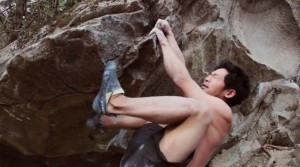I need to speak more clearly about the relationship between art and aesthetics. I am tending to either blur the distinction or insist upon it very strongly. My general view is that art represents an institutionally-configured sub-set of the aesthetic. The aesthetic for me is less grounded in the senses as such than in an alternation between dimensions of experience and representation. It represents a pause or break in the experiential flow as well as a motion elsewhere; it opens up another space of action and reflection. However, this light play of division, of multiplication of surfaces and resonances, is nothing alien. It is actually, paradoxically integral to experience, which is never simply a seamless and uninterrupted flow, which is always intrinsically a play of self-division. The aesthetic then is perhaps this motion, this field, this imperative to mediation. Yet strangely it is a form of mediation that has difficulty speaking, of finding means of being communicated beyond the complexity of experience itself. Art provides one context for making the aesthetic evident, but at the same, in laying claim to the aesthetic, also ends up failing to recognise and/or devaluing its broader relevance to all manner of dimensions of experience. The paradox of art is that it serves both to manifest the aesthetic and to deny its broader currency and implications.
I have a simple example of aesthetics beyond art. In March 2012, after two years of effort and multiple trips from his home in Japan to Cresciano Switzerland, Japanese rock-climber, Dai Koyamada, climbs one of the hardest boulder routes in the world, Dave Graham’s “The Story of Two Worlds” (in the process adding a new, lower start). The boulder itself appears nothing remarkable. It is not very high (scarcely more than a couple of metres), but the climbing is at the very limits of human difficulty and the ascent attracts worldwide attention within the international climbing community. Now, of course, all manner of aspects of climbing have an aesthetic dimension. If we were to trace its history back to the European Grand Tour and to the sublime response to the alpine landscapes – to the determination to move within those landscapes rather simple regard them from afar, to drop the alibi of science (barometric measurements) and to focus on line and difficulty – then we could recognise already a play of image and intimate experience that is recognisably aesthetic, but I want to draw attention to just a single moment in the video of Koyamada’s final successful ascent. Just as he places both hands on the large, finishing holds, just as he realises that he is certain to complete the climb, he stops. Still dangling upside down and just on the verge of pulling over the lip of the roof, he pauses and closes his eyes. That pause, that splitting of the present, that attempt to hold the present and make it cohere and to find in it a space of reflection is the very stuff of the aesthetic. Its poignancy lies precisely in its impossible but necessary relation to the elusiveness of lived experience, of its inevitable passage away – of its intimate contract with an ultimate, intractable dimension of invisibility.


Would you agree that a lot of technological art lacks an aesthetic character? (or maybe just a lot of art lacks aesthetic relevance?). As an example, consider this work: http://vimeo.com/35109750
It is clever but for some reason it has no *meat*, it doesn’t stick. Once you “get it” there’s nothing left. It exhausts itself very quickly.
My way of thinking about it is to use the word “resonance”. I guess, in sound, resonance is the thing that lingers after the event. And that lingering really concerns the bouncing back and forth … perhaps a bit like your movement between experience and representation … bouncing back and forth.
It’s a very nice moment when he pauses and shuts his eyes. The struggle is over. There’s almost a mourning, for the end of the process, in that. But it’s SO short.
I’m interested in your idea of the aesthetic being an alternation between experience and representation. In shutting his eyes, Koyamada, as you say, may be exiting his absorbtion or flow, exiting his loss-of-self in the present moment, in order to look at what he is doing, as if from outside the situation. It is perhaps a kind of mindfulness he is exercising.
Regarding representation – do you mean that Koyamada’s moment of mindful presence in the moment (when he is still “in” the climb, but can afford to step outside of it momentarily) is what also will enable him to represent this experience to himself, in the future? Is it a memory snapshot?
And what of the video document? If not for this technological mediation, nobody (possibly not even Koyamada himself) would ever know/remember that he had taken that micro-pause.
Is this representational mediation necessary for the Koyamada example to count as “aesthetic” in your terms?